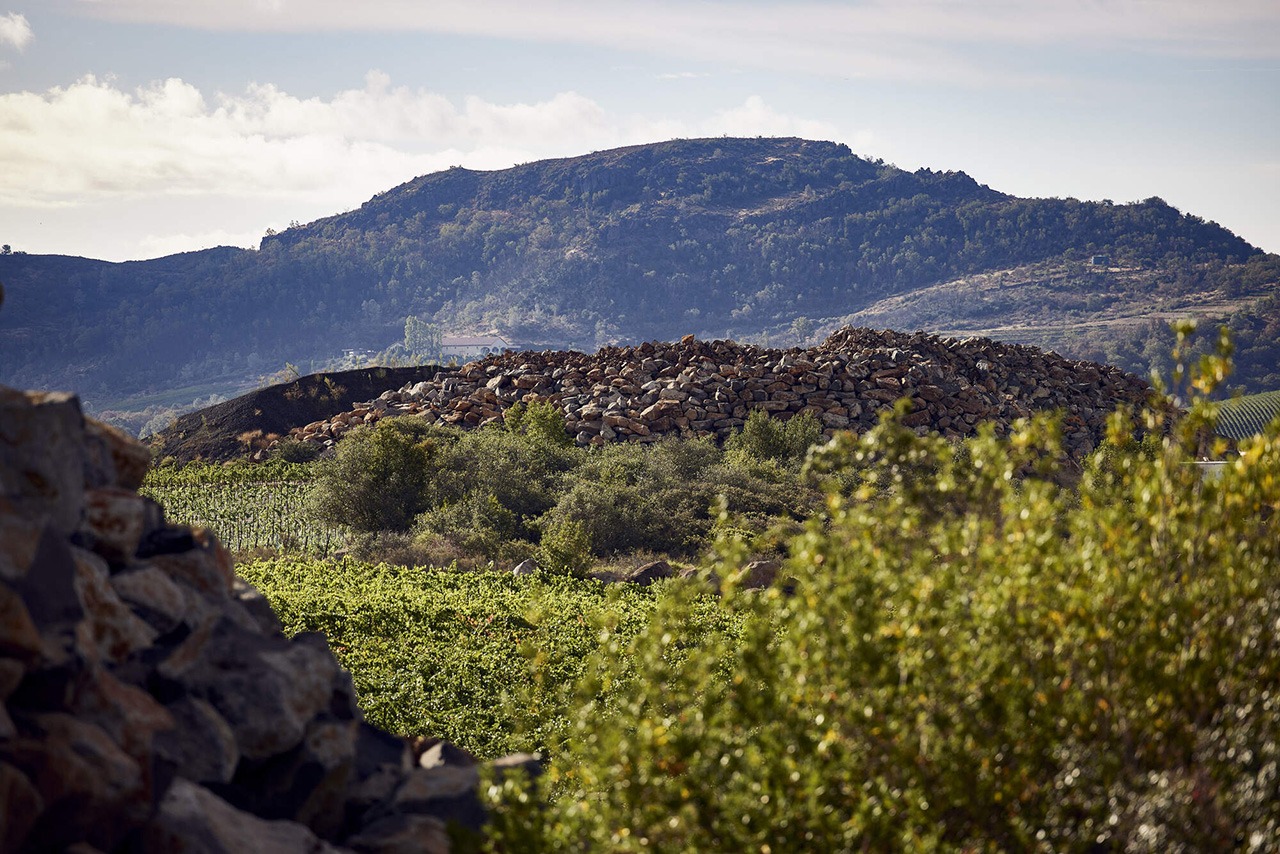
Once considered unplantable, Stagecoach is one of the most sought-after vineyards in Napa Valley.
The Stagecoach Vineyard sits in a remote and rocky bowl in the eastern mountains of Napa Valley, soaring at 1,200 – 1,750 feet in elevation. Though most of the vineyard has southwestern exposure and is in the trajectory of the sun throughout the day, its elevation above the fog line allows the vineyard to cool at night. As a result, the fruit here is subject to mountainside characteristics of depth, complexity and ageability.
Stagecoach is Napa Valley winegrowing in the extreme. Spanning multiple AVAs and regions, its steep terrain is dramatic – strewn with enormous boulders and rocky outcroppings that rise from the earth, making farming difficult. The thin soils both de-vigorate the vines and provide exceptional drainage. This storied vineyard produces vibrant, multidimensional Cabernets known for their longevity in the cellar.
The region first gained notoriety for robberies in the 1870s and 80s by a local poet-bandit known for his style and sophistication. Charles Earl Boles, aka Black Bart, was dubbed the “gentleman bandit.” He purportedly never stole from stagecoach passengers, only taking the gold bound for the San Francisco Mint and thanking his victims once it was turned over. Although he brandished a firearm, he never fired it once during his 28 hold-ups. Instead, he sometimes left behind a poem, a detail the public latched onto with great enthusiasm.
So blame me not for what I’ve done,
I don’t deserve your curses,
And if for any cause I’m hung,
Let it be for my verses!
-Black Bart PO8
Around this same time, German settlers recognized the region’s sunny, steep slopes and well-draining soils as ideal for growing wine grapes. Their vineyards produced some of the highest-priced and most well-regarded grapes in Napa Valley. But in the early 1900s, the increased deer population resulted in extensive crop loss, and by Prohibition, all viticulture in the region was abandoned.


In 1992 Dr. Jan Krupp was inspired by the old vines still producing fruit on the property and embarked upon one of Napa Valley’s most ambitious vineyard developments to date. Local experts claimed it was an impossible task. The closest paved road was over two miles away.
Krupp forged a path and worked tirelessly to clear the massive boulders. It took seven years of moving more than one billion pounds of volcanic rock before he could begin cultivating the vineyard. Krupp dubbed the rockpiles that dot the vineyard landscape his “personal Stonehenge” and decided to name the vineyard Stagecoach as a tribute to Black Bart, the sophisticated gentleman bandit.
Today, the 1,300-acre property retains its rugged beauty and has about 600 acres with 16 distinct varieties planted to vine, primarily Cabernet Sauvignon. Stagecoach Cabernets are known for their ageability, and we’ve bottled ours in both 750ml and 1.5 formats. A much sought-after source for cult wine producers, Stagecoach has been a blending component of our Lot No. 1 Cabernet Sauvignon as far back as 2003. Its high elevation makes it a natural fit for our Crown Cabernet Collection, a portfolio that showcases fruit from esteemed mountain vineyards.
2019 Stagecoach Vineyard Cabernet Sauvignon
2019 Stagecoach Vineyard Cabernet Sauvignon brings the presence of nearly 1,800 feet elevation piercing through the fog and the unforgiving rocky terrain to this wine. A dense concentration of blueberry reduction and black currant from the longer ripening season rises from the glass. Notes of black mission fig and mocha dust are framed by crushed bay leaf and star anise. A buoyant, supple structure and youthful mouthfeel carries through to a lasting finish.



